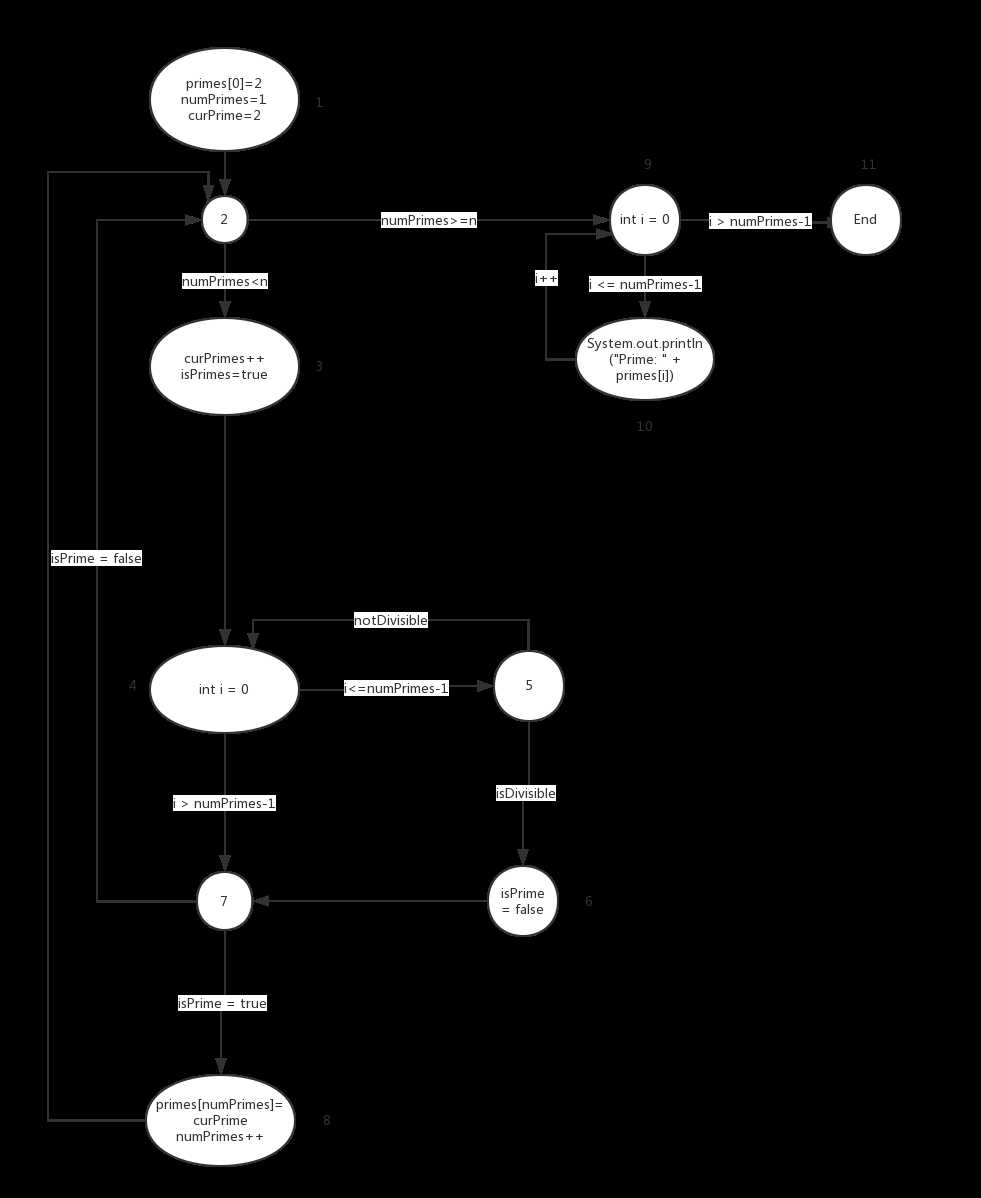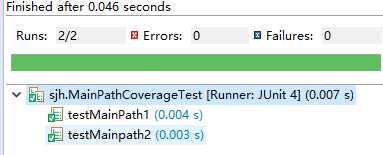Use the following method printPrimes() for questions a-d (inside the textbook)
Posted
tags:
篇首语:本文由小常识网(cha138.com)小编为大家整理,主要介绍了Use the following method printPrimes() for questions a-d (inside the textbook)相关的知识,希望对你有一定的参考价值。
1. Codes from the textbook
/*******************************************************
* Finds and prints n prime integers
* Jeff Offutt, Spring 2003
******************************************************/
public static void printPrimes (int n)
{
int curPrime; // Value currently considered for primeness
int numPrimes; // Number of primes found so far.
boolean isPrime; // Is curPrime prime?
int [] primes = new int [n]; // The list of prime numbers.
// Initialize 2 into the list of primes.
primes [0] = 2;
numPrimes = 1;
curPrime = 2;
while (numPrimes < n)
{
curPrime++; // next number to consider ...
isPrime = true;
for (int i = 0; i <= numPrimes-1; i++)
{ // for each previous prime.
if (isDivisible(primes[i], curPrime))
{ // Found a divisor, curPrime is not prime.
isPrime = false;
break; // out of loop through primes.
}
}
if (isPrime)
{ // save it!
primes[numPrimes] = curPrime;
numPrimes++;
}
} // End while
// Print all the primes out.
for (int i = 0; i <= numPrimes-1; i++)
{
System.out.println ("Prime: " + primes[i]);
}
} // end printPrimes
static boolean isDivisible(int x, int y){
int a = y/x;
double b = (double)y/(double)x;
// System.out.println(a);
// System.out.println(b);
if(b-a == 0){
return true;
}
else{
return false;
}
}
2. Control flow graph

2. For instance, when the greatest prime is below 4, n=5 is in front of n = 3
3. When n < 2, the while loop will not be executed.
4. Point Coverage: {1,2,3,4,5,6,7,4,7,8,9,10,11}
Edge Coverage: {{1,2},{2,3},{3,4},{4,7},{4,5},{5,4},{5,6},{6,7},{7,8},{7,2},{8,2},{2,9},{9,10},{10,9},{9,11}}
Main Path Coverage: {(1,2,3,4,5,6,8),(1,2,3,4,5,6,7,9,10),(1,2,3,4,5,6,7,9),(1,2,3,4,5,9,10),(1,2,3,4,5,9),(3,4,5,6,7,9,10,2,11),(3,4,5,6,7,9,2,11),(3,4,5,6,7,9,10,2,11),(3,4,5,6,7,9,2,11),(3,4,5,9,10,2,11),(3,4,5,9,2,11),(3,4,5,9,10,2,11),(3,4,5,9,2,11),(6,8,5,9,10,2,11),(6,8,5,9,2,11),(6,8,5,9,10,2,11),(6,8,5,9,2,11),(5,6,8,5),(2,3,4,5,6,7,9,10,2),(2,3,4,5,6,7,9,2),(2,3,4,5,9,10,2),(2,3,4,5,9,2)}
5. Test the Main Path Coverage based on Junit and Eclemma
Set n=2 in path1 and set n=5 in path2


以上是关于Use the following method printPrimes() for questions a-d (inside the textbook)的主要内容,如果未能解决你的问题,请参考以下文章
The following method did not exist, reactor.netty.resources.ConnectionProvider$Builder...
The method's class, com.google.common.collect.FluentIterable, is available from the following lo
The following method did not exist, reactor.netty.resources.ConnectionProvider$Builder...
spring-boot:The following method did not exist: com.google.gson.GsonBuilder.setLenient()
The following paths are ignored by one of your .gitignore Use -f if you really want to add them.
graphQL 启动报错No method or field found with any of the following signatures (with or without one of [i